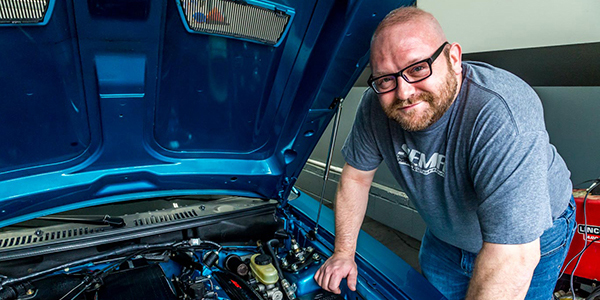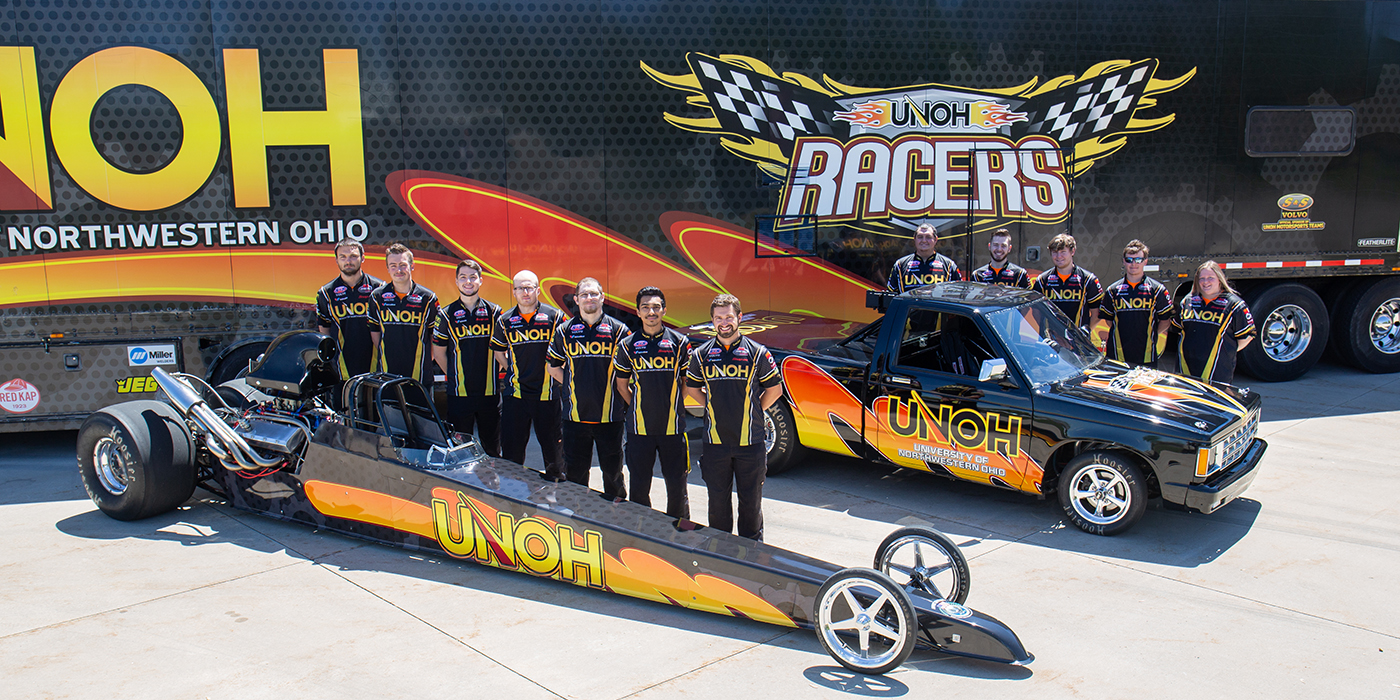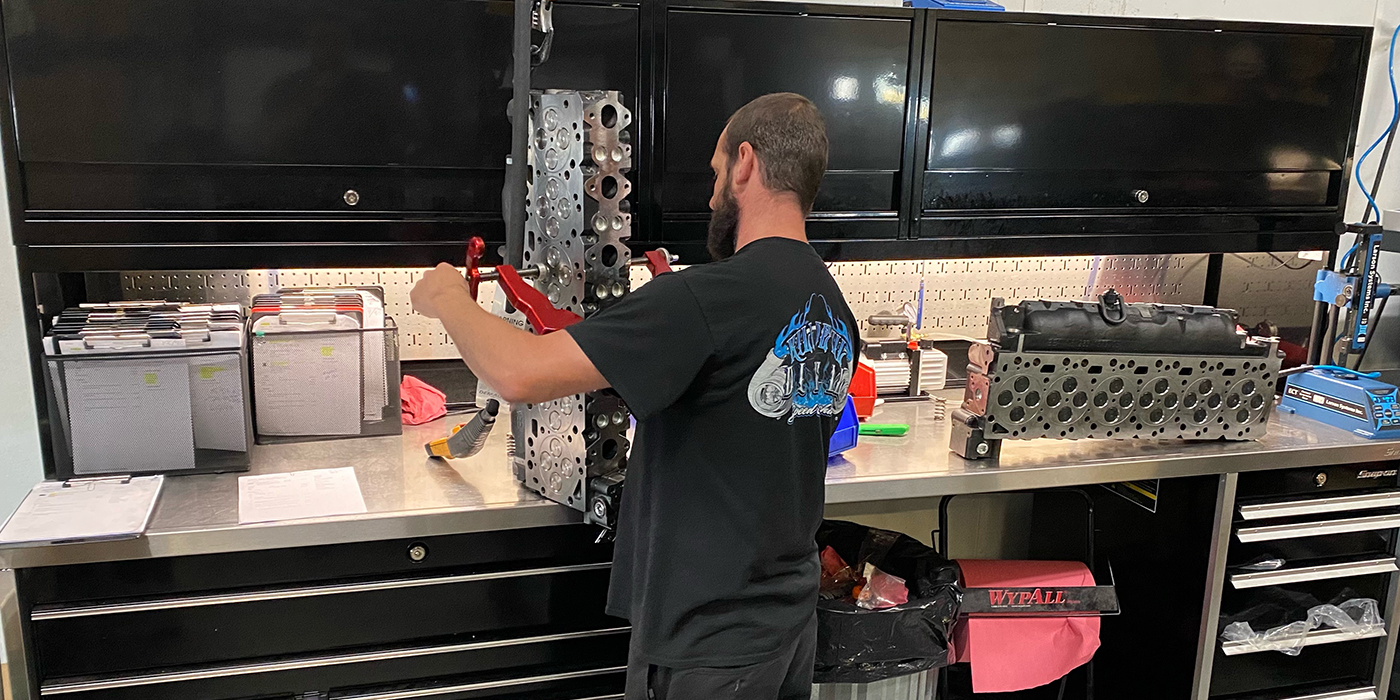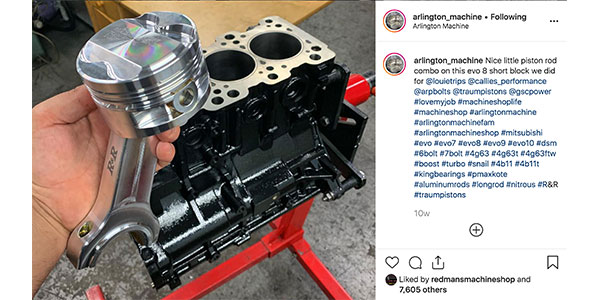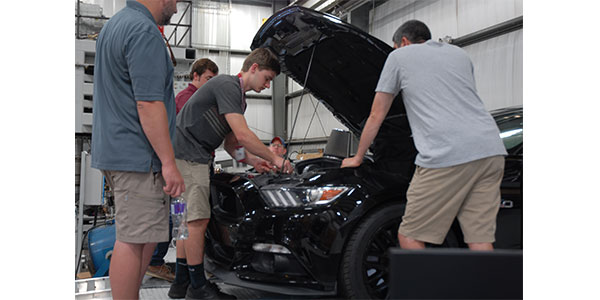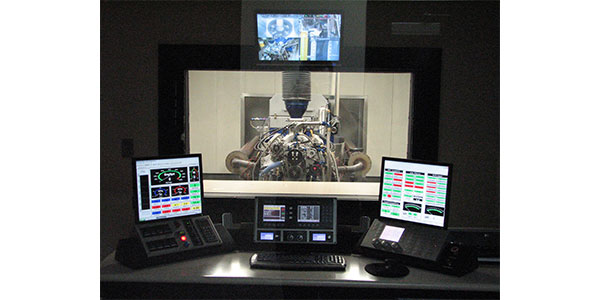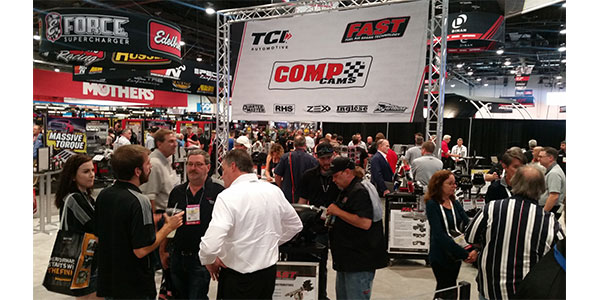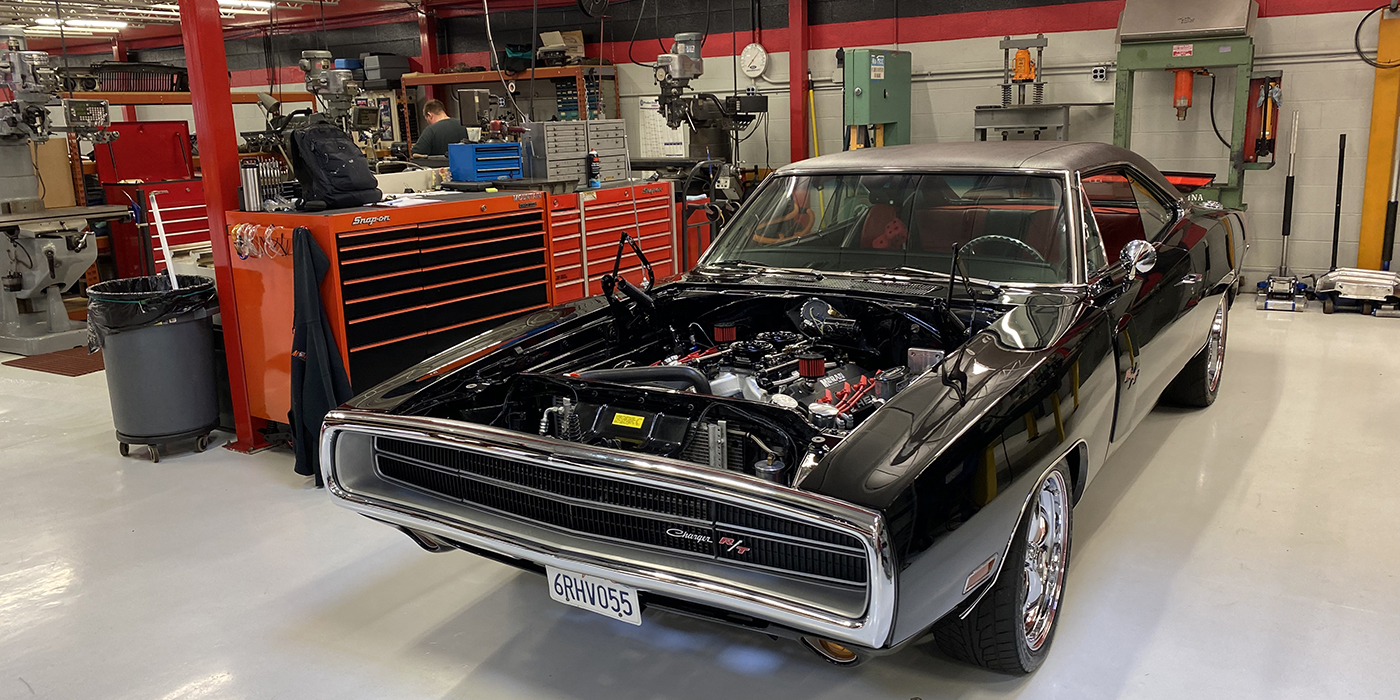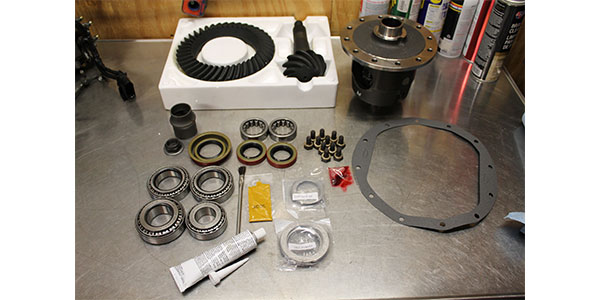Luckily much of the equipment that engine builders use can last for decades and with regular maintenance can repay you over and over; I’ve worked on lots of equipment that was a LOT older than me, and I can tell you there’s a certain satisfaction in taking the helm of a big, heavy machine that you know will still be working hard long after you’re retired. The damping effect of very heavy equipment means smooth cuts and repeatability from cylinder to cylinder and even engine to engine, but it requires regular maintenance.
Regular maintenance means more than just occasionally lubing the ways. You must regularly verify the equipment’s accuracy and calibrate accordingly. Just because it’s old, doesn’t mean it can’t be accurate.
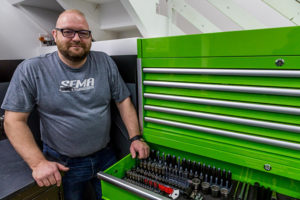
A few things to look for:
- Backlash or run-out – this can often be adjusted out or even retrofitted to new technology. That 1955 Bridgeport might feel worn out, but probably just needs the lead-screw replaced or upgraded to ball screws. Just like that worn out engine you’re rebuilding, it’s not that difficult.
- Worn bearings – this one is self explanatory. I hope.
- Measuring equipment – invest in good quality measuring tools.
- Get a dial bore gauge that measures to tenths (0.0001”). Yes, it’ll cost north of a grand, but if you’re a serious engine builder, quality costs money. Plastigage is better than nothing, but has it’s place.
- Quality Micrometers will last a lifetime if properly cared for.
- Use fixtures that allow critical measurements to be easily made – don’t rely on worn out pointers and scales (rulers). Use a modern indicator or micrometer.
If it has newer technology with it (a computer or sensors hooked to it), make sure that it can be upgraded down the road. For example, an old crankshaft balancer may be capable to getting within 10 grams of balance, but with new sensors and a modern computer the same balancer may be capable of 0.1 grams. So current equipment upgrades are also an option.
Another area of improvement may be your measuring equipment. You should calibrate your equipment and tools on a regular basis. Sounds obvious, but is often overlooked.
Leasing vs. buying
Leasing
Pros:
- Less money up front – no huge down payment
- More equipment options as you’re not as restricted by high up front costs
- Easier equipment upgrades for higher volume shops – swap it out before it’s worn out
- Technology upgrades as technology advances – think CNC head porting
- Usually 100% tax deductible as a business expense
- Leasing means you usually don’t pay for maintenance; If it breaks, call the leasing company
Cons:
- You can pay higher costs over the course of time – since you don’t own it, you’re not building equity; when you’re done, you can’t sell it and recoup any of your investment
- Some leases can be longer than you need or want – large and expensive equipment might be in the way and costing you money long after your needs are done
- Maintenance by the leasing company may have you down for a while
they leasing company may not be able to repair your equipment as soon as you need it
- Some leasing companies may have limited selection of equipment
Buying
Pros:
- You own it, so you can modify and repair it as you feel necessary
- You’re building equity, so when you’re ready for an upgrade, you can sell your equipment
- Tax incentives – you may be able to depreciate the equipment over time for a smaller overall tax bill
- No contracts and regular maintenance issues to worry about
- Buy what you want when you want and upgrade when you want
Cons:
- Higher upfront cost – you’ve got to put a chunk down to get it
- You might have to opt for cheaper equipment – bot quality AND price – you’ve got to get what you can afford and may have to forego the expensive bells and whistles you really want
- You may get stuck with equipment as technology advances. CNC capabilities increase similarly to computer technology, leaving you holding equipmentthat you can’t sell.
- Maintenance is on you – an expensive repair is all your responsibility, leaving you with a huge bill and possibly a lengthy downtime waiting on parts
Traditional banks are getting more hesitant to lend in general. They’ve been burned enough in the past so they have to be to protect themselves. Online lenders can offer better deals than the brick and mortar places. Either way, the rates will often depend on your business history, cash flow and credit.
One quick way to find online lenders is to go to Nerdwallet.com and search under loans, then small business loans. You will get a huge list of lenders that can be narrowed down to best fit your needs. Sites like that also offer a huge amount of information that can benefit you in other areas. Read up and save.
My advice is to buy or lease the absolute best you can afford. I look for solid manufacturers that have been around for many years and will likely still be in business years down the road.
Talk to the sales reps in your area and let them know what you’re looking for. They may know someone who has what you need that’s looking to upgrade. They will gladly help facilitate that sale to you if it helps them sell something new. Finally, consider upgrading older equipment to current standards, it may be a less expensive option and result in a heavier built, more solid machine that can last for many years.
To speak with Kevin Stack, owner of Noble Venture Financial Group about your shop’s financial situation – or anything else – you can reach him by phone at 919-279-3846. Or email him at [email protected].

